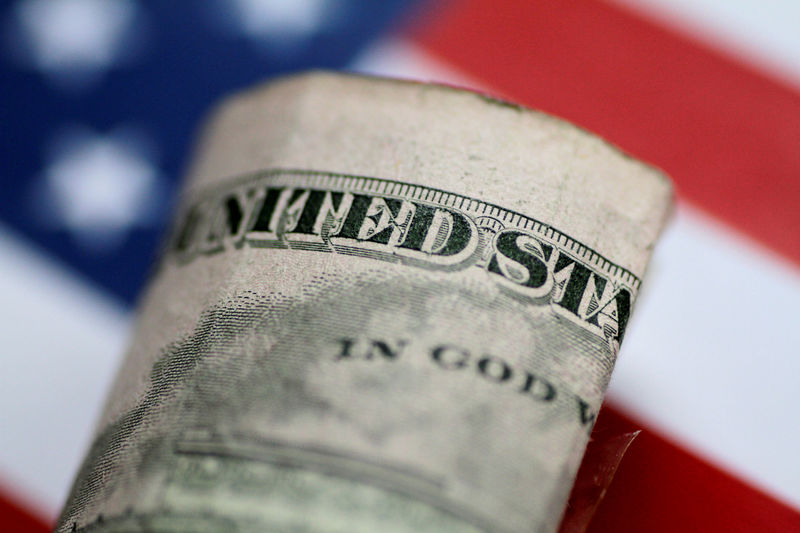Investing.com - The U.S. dollar stabilized Thursday after a sharp overnight drop in the wake of Fed Chair Jerome Powell ruling out any rate hikes, while the Japanese yen was volatile amid intervention talk.
At 06:00 ET (10:00 GMT), the Dollar Index, which tracks the greenback against a basket of six other currencies, traded 0.1% higher at 105.645, after falling 0.6% overnight.
Powell rules out further rate hikes
The Federal Reserve kept interest rates unchanged at the conclusion of its latest policy-setting meeting on Wednesday, as widely expected, with Fed Chair Jerome Powell acknowledging that fighting inflation was taking longer than expected.
However, he largely ruled out interest rate hikes this year, which surprised the dollar bulls given recent stronger-than-expected inflation data.
“While the Committee added a hawkish acknowledgment of the ‘lack of further progress’ on inflation so far this year to its statement, Chair Powell offered a dovish message in his press conference,” economists at Goldman Sachs (NYSE:GS) said, in a note.
"We have left our forecast unchanged and continue to expect two rate cuts this year in July and November,” they added.
Economic data is going to be studied even more closely now, as Powell emphasized the need to be data-dependent, and there are weekly jobless claims due for release later in the session.
However, the first key data point arrives on Friday, with the closely watched U.S. employment report.
Nonfarm payrolls are expected to have risen 243,000 in April, a drop from just over 300,000 the prior month, but still indicative of a healthy labor market.
Eurozone manufacturing still weak
In Europe, EUR/USD traded 0.1% lower to 1.0699, after data showing that the eurozone’s manufacturing sector remains in the doldrums.
The final eurozone manufacturing Purchasing Managers' Index, compiled by S&P Global, fell to 45.7 in April from March's 46.1, below the 50 mark denoting growth in activity for a 22nd month.
The bloc's economy recovered last quarter from a mild recession and expanded 0.3% quarter-on-quarter in January-March, official data showed earlier in the week, but any further growth is unlikely to come from the region’s manufacturing sector any time soon.
GBP/USD traded 0.1% lower to 1.2509, trading in a tight range, with the next economic data release of note being Friday’s services PMI.
This is expected to show an increase to 54.9 in April, from 53.1 the prior month, suggesting that the U.K.’s dominant services industry remains in a healthy state, potentially offering the Bank of England room to delay interest rate cuts.
Yen volatile; more intervention at work?
In Asia, USD/JPY rose 0.5% to 155.26, with the pair making something of a recovery after it suddenly fell more than 3% on Wednesday from late Tuesday levels, prompting talk of more intervention by the Japanese authorities to support the yen.
The USDJPY pair had tumbled from 160 on Monday, which traders said was the new line in the sand for Japan when it came to yen weakness. But the factors weighing on the yen - chiefly a dovish Bank of Japan and a wide gap between local and U.S. rates - are expected to remain in play, limiting the effect of government intervention.
Broader Asian currencies moved in a flat-to-low range, with the AUD/USD pair up 0.1% at 0.6531 even as data showed the country’s trade balance shrank to an over three-year low in March.
